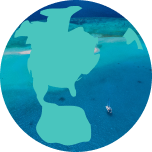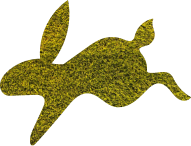
Baby Heat Rash: Symptoms, Prevention & Treatment
If you've ever noticed small raised pink bumps on your baby after spending some time in the heat or outdoors, they may have experienced baby heat rash. Heat rash is classified as the blockage of pores that are directly connected to the sweat glands, which results in the inflammation and appearance of raised bumps on the skin, especially when exposed to direct heat.
Understanding baby heat rash treatment solutions and remedies can help you to best address your own child's rash as quickly as possible.

Symptoms Of Baby Heat Rash
Before you can begin treating your baby's heat rash, you will need to know what to look for in order to identify the rash itself. The most common signs and symptoms of baby heat rash include:
- Raised irritated skin which appears as minor pink blisters and/or bumps.
- Prickly bumps on various areas of the skin after spending time in direct sun or heat.
- Bumps that appear around the chest, shoulders, and neck in infants.
- Obvious discomfort in your baby's actions and behaviors, which indicate that the bumps are painful or irritating at the very least.
What Causes Heat Rash?
Most often, heat rashes are caused by the blockage of pores that are directly linked to the individual's own sweat glands.
Some scenarios which may trigger heat rash, especially in babies, may include:
- Having pores blocked or covered while spending time in the heat and sweating.
- Spending too much time in hot and humid weather.
- Wearing clothing that blocks and covers too many sweat gland pores while outside in the heat.
- Immature sweat ducts, which are more prevalent in infants and growing babies, can also contribute to the development of heat rash in babies.
- Some medications such as clonidine can also contribute to the development of heat rash due to its ability to cause blockages in various pores in sweat glands throughout the body.

Preventing Baby Heat Rash
When you are caring for your baby's skin, there are a few remedies and preventative measures to keep in mind to help prevent baby heat rash from even occurring. Keeping sun safety in mind at all times is also a way to help keep your baby safe and protected whenever you are spending time out in the heat. Preventing baby heat rash is possible by keeping the following tips in mind anytime you are planning to spend time in the sun:
- Wear appropriate baby sunscreen designed for infants who are the same age as your child.
- Provide your baby with cotton-based clothing that is loose-fitting to help prevent the potential blockage of sweat glands.
- Avoid overexposure to the sun with your infant, especially as infants typically are still developing and may have immature sweat glands which cause them to develop heat rash much faster than the average adult.
- Stay out of direct sunlight whenever possible.
- Use hats and protective gear to prevent your baby's skin from being directly exposed to the sun as well as harmful UV rays.
- Use fans or spend time in ventilated areas when outdoors to keep your baby's temperature as low and as normal as possible without causing them to sweat or overheat.
- Keep your infant's skin as physically cool as possible by keeping them out of direct sunlight and ensuring proper airflow whenever you are outside.
- Stay indoors whenever possible, especially if you are experiencing excessive heat or a heat wave, as this is the best prevention of baby heat rash in infants who are growing with underdeveloped sweat glands.

Baby Sunscreen Use
Using baby sunscreen with a high SPF is also ideal whenever you intend to take an infant or toddler outdoors, especially if they are prone to heat rash or if they have sensitive skin. However, it is important to note that babies who are under the age of 6 months should not use sunscreen when outdoors, even if they have sensitive skin.
If your baby is 6 months or younger, it is best to simply avoid exposing them to direct sunlight in hot weather as their sweat glands continue to grow and develop. When your child is under the age of 6 months, it is best to simply keep them out of the sun altogether.
An alternative option when taking your baby out into the sun before they reach 6 months of age is to do so while keeping them in their stroller, by sitting in the shade underneath a tree, or by carrying an umbrella with you at all times whenever you are spending time outdoors together.
Choosing a Sunscreen
If your child is older than 6 months of age, you may be wondering how to go about finding a sunscreen that is ideal for them, their age, and their skin type. When choosing a sunscreen, there are a few important factors to remember that can help to guide you along the way.
SPF
Finding sunscreen for your baby is possible by searching for a higher SPF sunscreen solution. Sunscreen SPFs between 15 and 30 are typical for those who are adults spending time in the sun. However, there may also be sunscreen options up to 50 SPF that may be more suitable for younger children as well as babies who may have sensitive skin when in the sun for too long.
Ingredients
Becoming more familiar with sunscreen ingredients can also help you to find a product that is just right for your baby. If possible, avoid ingredients such as oxybenzone, as this may trigger various hormonal responses. Research sunscreens you are interested in and thinking of using for your baby to determine which formula is right for you and free from potential chemicals, hormonal ingredients, or any harmful additions.
Sensitive Skin Considerations
If your baby has sensitive skin or cannot be exposed to much sunlight of any kind, you may want to search for baby sunscreens that are designed for those who have sensitive skin. Products that include ingredients such as titanium dioxide and zinc oxide are also ideal for sensitive areas of the body, such as the shoulders, ears, nose, and even the cheeks.
Broad-Spectrum
If you want to block out both UVA and UVB rays, it is highly advisable to seek out a sunscreen for your baby that is labeled as (and certified as) "Broad-Spectrum". Broad-spectrum sunscreens include formulas and ingredients that help to screen out or deflect harmful UVA and UVB rays from ever impacting the skin.
Baby Heat Rash Treatment
When you discover your child has a baby heat rash, you will likely want to treat it as quickly as possible. The best course of action for a baby heat rash is to remove your child from direct sunlight and heat and to cool and free the skin as fast as possible, allowing it to breathe while unblocking blocked sweat gland pores.
If your baby's heat rash does not go away within 24 hours of removing them from the sun and it appears infected (increased redness and swelling), calling your doctor is highly advisable. Keep an eye on your child's temperature, as a fever may be a sign of a more serious infection, which requires immediate emergency medical care.
If your child is crying, upset, irritable, or unable to remain awake without appearing in pain, contact your doctor immediately.

Baby Heat Rash: FAQs
What does heat rash look like on a baby?
A heat rash will typically appear as raised pink or red bumps, which are typically visible on the shoulders, near the neck, or even on various areas of the face in babies.
What causes heat rash on babies?
Heat rash in babies is typically caused by a lack of daily sunscreen and overexposure to the sun as well as hot and humid environments. If a baby's sweat gland pores are blocked, they are also much more likely to develop a heat rash of some kind.
How long does heat rash on babies last?
A heat rash in babies will typically last anywhere between one day and a week in serious or severe instances. Most often, a heat rash will begin to subside and disappear within a few days of it first appearing on your infant's body.
How can I treat my baby's rash naturally?
Always remove your child from excessive heat and direct sunlight, especially if they are 6 months or younger. Because children who are 6 months or younger are not advised to use even a safe sunscreen designed for children, it is best to simply keep them out of the sun and direct sunlight as they heal and grow. Whenever you are spending time outdoors with an infant, it is best to do so out of the sun and instead, in the shade, with a stroller, or with a form of protection such as an umbrella by your side.
If you want to help soothe your baby's discomfort, you can do so by ensuring they are wearing loose-fitting cotton-based clothing. Use soothing gels such as aloe vera on areas of the skin which have been clogged. However, avoid placing any creams or products on areas of the heat rash that appear infected, as this may cause additional and unnecessary stinging pains.
Dealing with baby heat rash can be daunting and overwhelming if you have never experienced it before. However, once you are familiar with how to identify and treat baby heat rash, you can provide your baby with the remedies and relief they need.





